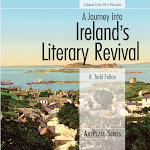
Photographing Literary Landmarks
One of my favorite parts of the three books I have done in the past four years is doing the photography. I have had the great fortune to photograph the Alcott’s Fruitlands farmhouse at sunrise on a cold January morning, William Butler Yeats’ Galway tower in the sunshine, Emily Dickinson’s bedroom, and Earnest Hemingway’s Cuban house. Each of these places presents a new challenge and offers new insights into the connections between literature and place. In the following series, I will explore some of the strategies I’ve used to create the photographs that accompany my books. I welcome your additional comments and suggestions.
Read Into It
All too many visitors have very little understanding of what was written at the literary landmark they’re at. Not to sound too much like a school teacher, but a little knowledge here can go a long way. While you may not be a scholar in the poetry of William Butler Yeats, you will want to know enough to realize that much of Yeats’ poetry is about the magic and mysticism found in nature. For example, while looking for the beach Yeats wrote about in “The Song of the Wandering Aengus,” these two swans who magically appeared as the sun broke out for the first time that day served quite well as symbols of what Yeats accomplished in verse.
One of my favorite parts of the three books I have done in the past four years is doing the photography. I have had the great fortune to photograph the Alcott’s Fruitlands farmhouse at sunrise on a cold January morning, William Butler Yeats’ Galway tower in the sunshine, Emily Dickinson’s bedroom, and Earnest Hemingway’s Cuban house. Each of these places presents a new challenge and offers new insights into the connections between literature and place. In the following series, I will explore some of the strategies I’ve used to create the photographs that accompany my books. I welcome your additional comments and suggestions.
Read Into It
All too many visitors have very little understanding of what was written at the literary landmark they’re at. Not to sound too much like a school teacher, but a little knowledge here can go a long way. While you may not be a scholar in the poetry of William Butler Yeats, you will want to know enough to realize that much of Yeats’ poetry is about the magic and mysticism found in nature. For example, while looking for the beach Yeats wrote about in “The Song of the Wandering Aengus,” these two swans who magically appeared as the sun broke out for the first time that day served quite well as symbols of what Yeats accomplished in verse.
Along the same lines, I had studied Yeats’ poem, “The Wild Swans at Coole,” numerous times and when my tour of Coole Park in Galway lead down to the water, I was thrilled to catch this view of the swans:

They only appear seasonally at the lakeside, so it was fortunate for me. But you don’t have to rely on luck. At the Old Manse in Concord, I knew I wanted to capture the paths that led Emerson from his study out into the woods that inspired his book, Nature and so walked around until I found this shot:

I will discuss photographing The Old Manse in the next installment of Photographing Literary Landmarks.
.jpg)










2 comments:
This is just another superb collection and nice idea to present. It amazed me decently. I assume you put the photo books on the shelf with immense tenderness (like kids are cared). Thanks for that, too.
openpage-openroad.blogspot.com is very informative. The article is very professionally written. I enjoy reading openpage-openroad.blogspot.com every day.
payday cash loan
online payday loans canada
Post a Comment